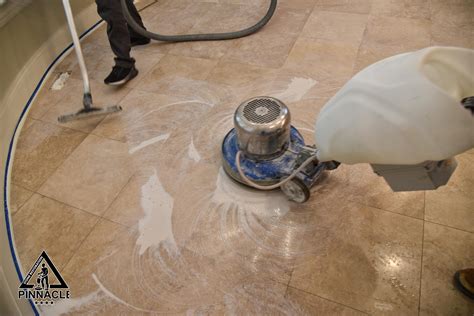Eco-Friendly Travertine Polishing: Safe and Effective Methods
Travertine, a beautiful and durable natural stone, graces many homes and public spaces. Its porous nature, however, requires careful cleaning and polishing to maintain its luster and longevity. Traditional polishing methods often rely on harsh chemicals that can harm the environment and the health of those involved. Fortunately, eco-friendly alternatives exist, offering a safe and effective way to restore and maintain the beauty of your travertine surfaces. This guide explores these methods, answering common questions about eco-conscious travertine care.
What are the environmental concerns with traditional travertine polishing?
Traditional travertine polishing often involves strong chemicals like harsh detergents, solvents, and acidic cleaners. These chemicals can contaminate water sources, damage ecosystems, and pose health risks to workers and homeowners. The volatile organic compounds (VOCs) released during polishing can also contribute to air pollution. Furthermore, the disposal of these chemical-laden waste products adds to environmental burden.
What are some eco-friendly cleaning solutions for travertine?
Switching to eco-friendly cleaning solutions is the first step towards responsible travertine maintenance. Consider these options:
- Mild Soap and Water: Often, a simple solution of warm water and a gentle, biodegradable soap is sufficient for routine cleaning. Always test any cleaning solution in an inconspicuous area first.
- Baking Soda Paste: For tougher stains, a paste of baking soda and water can gently lift grime and discoloration. Apply it, let it sit for a few minutes, then scrub gently with a soft brush and rinse thoroughly.
- White Vinegar: Diluted white vinegar (a natural acid) can help remove mineral deposits and stubborn stains. Mix it with equal parts water and apply sparingly, rinsing immediately afterwards. Caution: Overuse of vinegar can damage travertine over time.
How can I polish travertine without harsh chemicals?
Polishing travertine eco-friendly requires a different approach than traditional methods. Instead of relying on harsh chemicals, focus on mechanical polishing techniques with non-toxic materials.
- Honing: This process uses progressively finer abrasive pads to smooth the surface and remove scratches. Choose pads made from recycled materials or sustainably sourced resources whenever possible.
- Microcrystalline Polishing Powders: Some polishing powders are made from natural minerals and are less harmful to the environment than chemically-derived products. Always check the product label for eco-friendly certifications.
- Steam Cleaning: Steam cleaning can effectively remove dirt and grime without using any chemicals. The heat and pressure loosen dirt and kill bacteria. However, be cautious not to over-steam the travertine, as excessive heat can damage it.
Are there eco-friendly sealers for travertine?
Sealing your travertine is crucial for protecting it from stains and damage. Opt for eco-friendly sealers that are low-VOC or VOC-free. These sealers minimize harmful emissions and offer long-term protection without compromising environmental standards. Look for sealers made from natural ingredients or those with certifications indicating their environmental friendliness.
How often should I clean and polish my travertine?
The frequency of cleaning and polishing depends on the level of traffic and exposure to dirt and grime. Regular sweeping or vacuuming prevents dirt from accumulating. A thorough cleaning with eco-friendly solutions should be done at least every few weeks. Polishing is typically needed less often, perhaps once or twice a year depending on the condition of the travertine.
What are some tips for eco-friendly travertine maintenance?
Beyond choosing eco-friendly products, consider these practices:
- Reduce water usage: Use water sparingly when cleaning.
- Use reusable cloths and tools: Avoid disposable cleaning cloths and opt for reusable microfiber cloths that can be washed and reused.
- Proper disposal: Dispose of any cleaning solution residue responsibly, according to local regulations.
- Preventative maintenance: Regular cleaning prevents dirt buildup, reducing the need for frequent and intensive polishing.
By adopting these eco-friendly methods, you can keep your travertine looking its best while minimizing your environmental impact. Remember, responsible cleaning and maintenance will not only enhance the beauty of your travertine but also contribute to a healthier planet.

